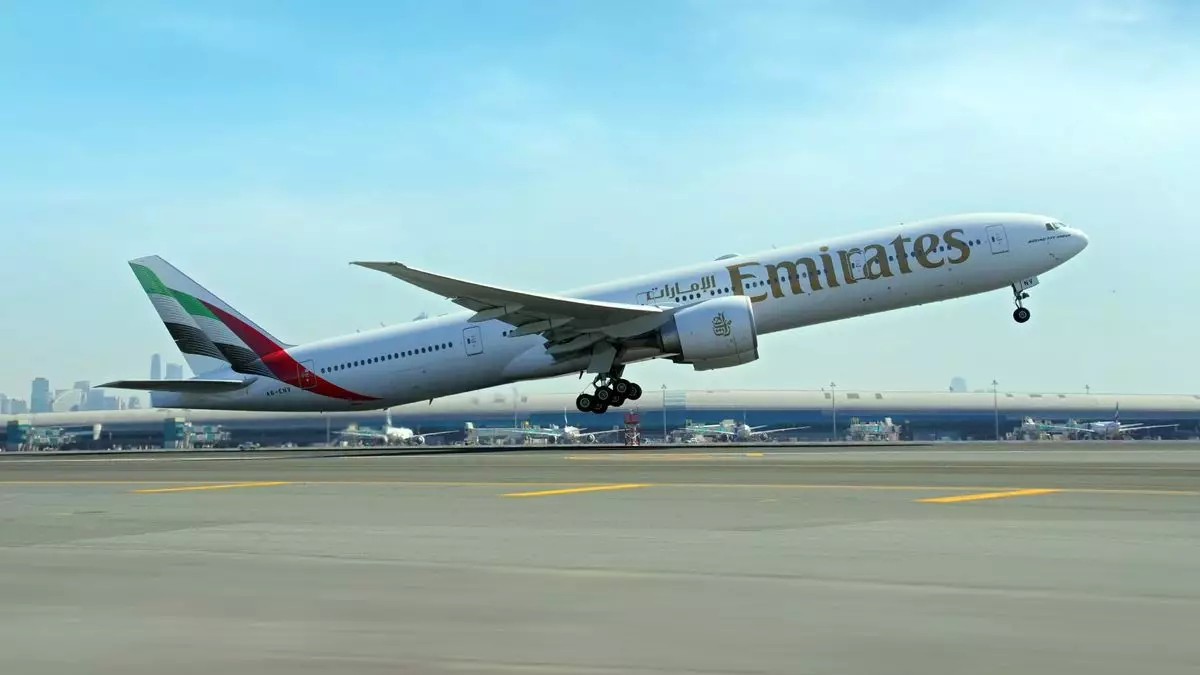In an ever-evolving geopolitical context, air travel in the Middle East has become a labyrinthine challenge for airlines and travelers alike. As tensions rise and fall, the air routes that once facilitated efficient connections between continents have shifted dramatically. Recent events, specifically the Iran-Israel ceasefire announcement, present a curious case study in aviation strategy and traveler sentiment. A significant issue has emerged: prolonged travel times due to airlines steering clear of Iranian airspace despite an ostensibly stable situation.
According to Flightradar24, while Iranian airspace reopened on June 25, airlines have largely maintained a cautious approach, preferring detours over Turkey or Egypt to bypass Iran entirely. The rationale behind such evasive maneuvers stems from heightened security concerns and a host of historical precedents. Major Gulf carriers like Emirates and Qatar Airways are now intricately affected, navigating an elongated path to connect travelers from the West to the East.
Challenges Faced by Airlines
The aviation industry’s response to the volatile Middle Eastern landscape highlights a fundamental tension between operational safety and customer convenience. Ian Petchenik, the director of communications for Flightradar24, sheds light on the operational ramifications of sidestepping Iran. Current flight path adjustments can result in additional travel times of 45 to 90 minutes, culminating in a significant impact on global connectivity. This additional duration can strain travelers not only physically but also financially, as the cost of potentially longer flights translates into higher ticket prices and increased layover durations.
Airlines like Air India, already confronting regulatory hurdles that have limited their routes over Pakistan and Iran, are experiencing a further squeezing of their operational parameters. The complexities heighten their dependence on alternative flight paths—which, although they provide flexibility, do introduce a layer of congestion that could affect timely operations. Senior analyst John Grant reflects on the industry’s adaptability, noting that airlines have implemented ample turn times to accommodate these changes. While operational scheduling appears relatively intact, the static nature of the broader geopolitical framework invites uncertainty.
Air Travel Sentiment: A Delicate Balance
As airspace considerations take center stage, the psychological impact on travelers emerges as a critical yet nuanced factor. The reopening of Tel Aviv airport alongside the suspension of numerous U.S. flights to Israel serves as a potent reminder of the fragility of air travel in turbulent regions. Jens Flottau, an experienced voice in commercial aviation, articulates the hesitancy that travelers might feel in selecting Middle Eastern hubs as connecting points. The past few weeks underscore the unpredictable nature of travel demand amid shifting geopolitical dynamics.
The reduction of flight options sparks questions about traveler sentiment, particularly concerning the notorious Middle East super hubs. Flottau’s insights emphasize an anticipatory mood—a cautious optimism—that might eventually promote these hubs as accessible gateways to connect East and West. Yet, whether this optimism translates to tangible increases in traveler volume remains uncertain.
Control Measures and Future Implications
Air traffic control entities in the affected regions have managed the increased complexities effectively, showcasing the resilience of air traffic management systems. As alternate routes fill with airplanes routed away from Iran, traffic congestion could become a recurring theme. The aviation industry prides itself on efficiency, and considering that these operational adjustments are likely to be temporary, the question arises: how will they re-evaluate their strategies if tensions escalate once again?
Travelers and industry stakeholders must brace themselves for a new aviation landscape—one marked by adaptability and resilience, but also one that demands analysis of political currents and consensus-building in the region. Aviation professionals may find themselves renewing their strategies to maintain operational fluidity, requiring a constant recalibration of risk assessments as global scenarios evolve.
For travelers contemplating their next journey through the Middle East, the emphasis must shift from merely reaching their destination to navigating the complexities presented by these geopolitical tensions. The air transport sector thus stands at a critical juncture, balancing safety, efficiency, and the ever-changing demands of a global market amidst the uncertain backdrop of regional politics. This new era of air travel is undoubtedly more intricate, but it also presents unique opportunities for innovation and progress.


Leave a Reply